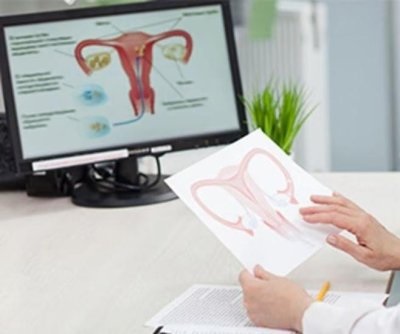
Toxic metal exposure and reproductive health problems are linked in a recent study (Photo: UPI)
Study Finds Link Between Toxic Metal Exposure and Women’s Reproductive Health
Toxic metal exposure and reproductive health problems are linked in a recent study according to the article released by UPI. In women approaching menopause, toxic heavy metals may reduce egg production in their ovaries, creating more serious health difficulties during and after menopause. Dwindled ovarian reserve can cause hot flashes, bone weakening, osteoporosis, heart disease, and cognitive impairment in middle-aged women. Widespread Toxic metal exposure may harm women’s reproductive health.
University of Michigan researchers showed that women with greater urine levels of harmful heavy metals such arsenic, cadmium, mercury, or lead have lower blood levels of the Anti-Müllerian hormone. Less AMH indicates fewer eggs in a woman’s ovaries. This shows how Toxic metal exposure can affect women’s reproductive aging and ovarian reserve.
Heavy metals in drinking water, food, and air contain endocrine-disrupting qualities that may impact human reproduction. Chemicals’ effects on ovarian reserve and infertility need further study, according to a study of urine and blood samples from roughly 550 middle-aged women. These findings shed light on the health effects of widespread toxic metal exposure in women.
READ ALSO: IOWA LAWMAKERS: What Comes After 2024 And Beyond In Terms Of Hospital Price Transparency?
Toxic metal exposure is linked to reproductive aging and ovarian reserve, as shown by earlier research. To fully understand how hazardous metals affect ovarian health, the experts recommend researching the younger population. This research is crucial to understanding how hazardous metal exposure may affect women’s reproductive health.
The study shows how toxic metal exposure affects women’s reproductive health, specifically ovarian reserve and reproductive aging. It highlights the need for ongoing studies to understand hazardous metal exposure and discover ways to reduce its impacts on aging women’s health. This study suggests reassessing environmental and occupational heavy metal exposure and protecting women’s reproductive health.
READ ALSO: Is It Possible For Faith Communities To Combat The Increasing Rates Of STIs?




![Tyson Foods Plant [Photo: Food Manufacturing]](https://southarkansassun.com/wp-content/uploads/2023/08/iStock_1185520857__1_.5e441daa51cca-600x337.jpg)








![Silverado Senior Living Management Inc. [Photo: Los Angeles Times]](https://southarkansassun.com/wp-content/uploads/2023/10/download-6-4-600x337.jpg)

![China's Wuhan Institute of Virology [Photo: Nature]](https://southarkansassun.com/wp-content/uploads/2023/09/d41586-021-01529-3_19239608-600x337.jpg)















